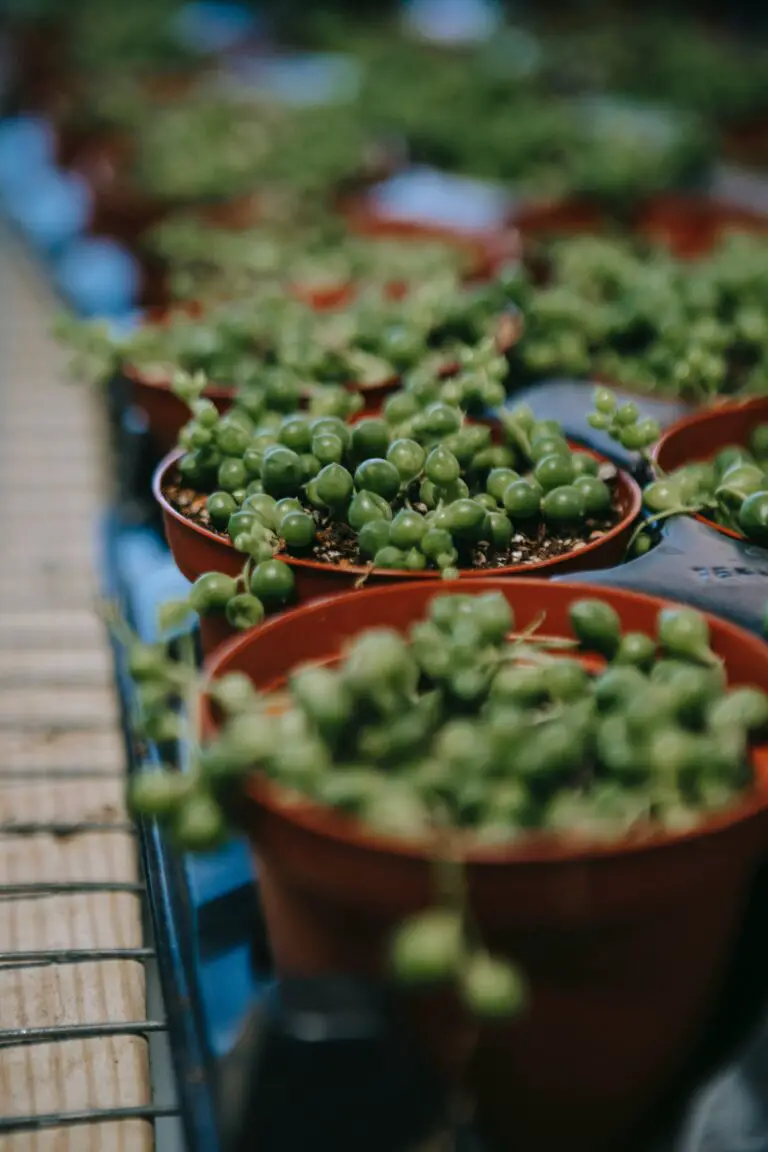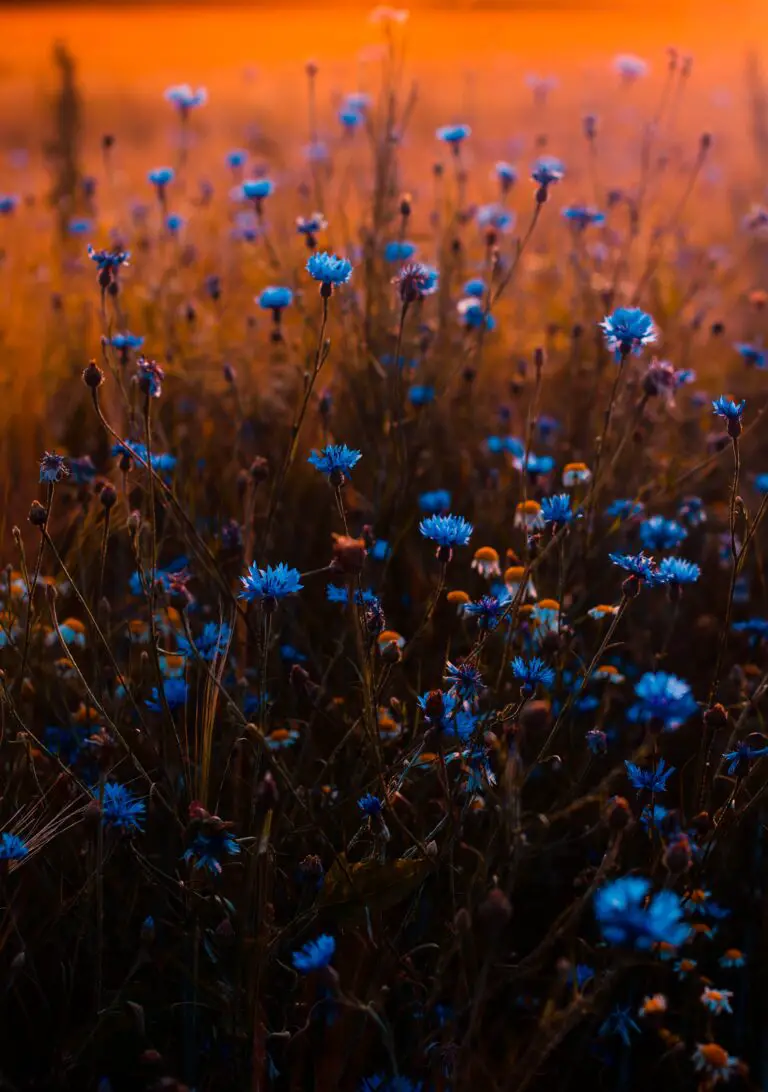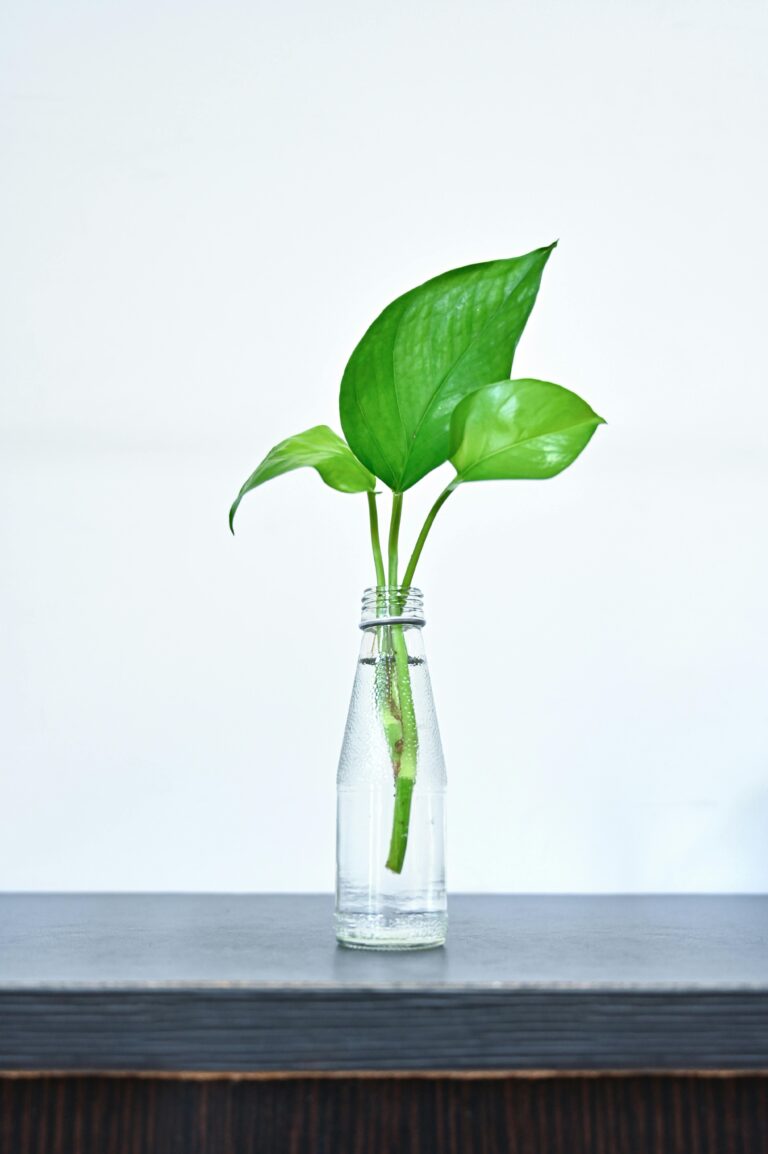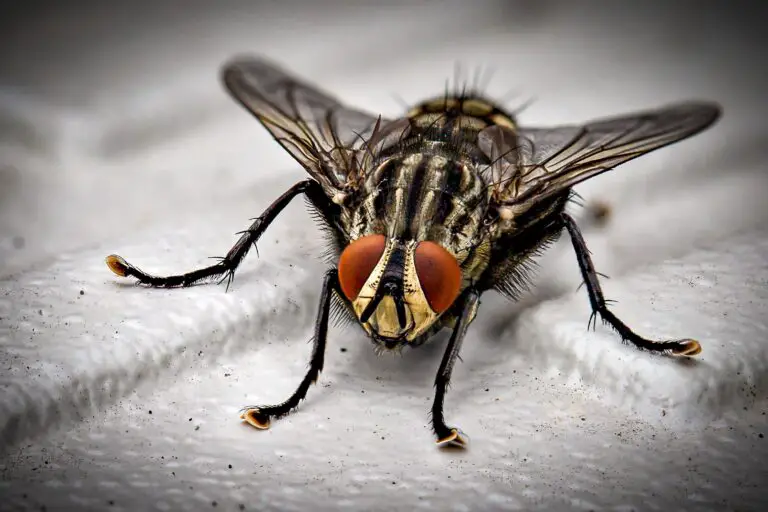Introduction to Senecio Serpens
Imagine a sea of serene blue waves, gracefully undulating in your garden or on your windowsill. That’s the tranquility you invite when you cultivate the vibrant Senecio Serpens. Native to the arid landscapes of South Africa, this striking succulent has adapted to thrive with minimal fuss, making it the perfect companion for both seasoned green thumbs and novice plant lovers.

Beyond its dazzling blue-green foliage, what truly sets Senecio Serpens apart is its resilience. Able to withstand long periods without water, this plant is the epitome of sustainability and grace. Incorporating it into your plant collection means embracing a symbol of strength, a testament to the wonders of the natural world.
Whether you’re aiming to turn your balcony into a succulent sanctuary or simply seeking a pop of color for your indoor spaces, the vivacious Senecio Serpens is a spectacular choice. Its ability to complement any setting while demanding so little in return makes it not just a plant, but a visual experience—a slice of the sublime.
So why settle for the ordinary when you can reach for the splendid chill of the Senecio Serpens, where each leaf whispers the stories of rugged terrains conquered, and each stem sings of the cool, alluring blue? This is your cue to weave this low-maintenance marvel into the tapestry of your botanical collection, embarking on a horticultural journey that’s as enchanting as it is effortless.
Physical Characteristics: A Blue Hue Marvel
Dive into the physical appeal of Senecio Serpens; a plant that easily captures admiring glances with its unique shape, size, and mesmerizing blue coloration. Often referred to as blue chalksticks, Senecio Serpens boasts fleshy, cylindrical leaves that artfully spiral around its stems, creating a meditative spire that’s both soothing and striking to behold.
The blue hue of this magnificent succulent is not just another canvas in the artist’s palette, but a wondrous adaptation that reflects sunlight, reducing water loss in its native habitat. The shade of blue can range from a subtle, powdery sky-blue to a rich, deep sea-blue, depending on the light exposure and growing conditions. Each leaf is like a small, plump sapphire that contributes to a larger gem-quality cluster, glistening as if still wet from a morning dew.
Standing at a height that rarely exceeds several inches, Senecio Serpens is a master of ground cover, capable of converting barren, rocky landscapes into lush, blue-hued oases. Its spread, which can be several feet wide, allows for dramatic underplantings or paired with other succulents for dazzling contrasts—like a splash of cool blue paint amidst a desert palette of greens, pinks, and purples.

For those keen on cultivating their own blue succulent haven, understanding the growth patterns and care tips for Senecio Serpens is key to successful gardening. This hardy plant can turn a novice gardener into a seasoned green thumb with a little patience.
If you’re eager to learn more about nurturing these and other succulents, be sure to explore our extensive guide that demystifies all aspects of their care. From the arid plains of South Africa to the terraces and tabletops worldwide, Senecio Serpens stands as a testament to both the resilience and the sheer aesthetic beauty that succulents can bring to our lives.
Ideal Growing Conditions for a Thriving Plant
Welcome to the world of Senecio Serpens, where the vibrant hues of blue and silver foliage transform your garden into a mesmerizing succulent haven. To ensure that your Senecio Serpens stands out with robust health and vivid colors, it’s essential to mimic the plant’s native habitat, providing it with the just-right combination of sun, warmth, and a dry atmosphere. Let’s dig into the secrets of cultivating a thriving Senecio Serpens.
Sunlight: Bathing in the Glow
Like an artist basking in the inspiration of golden mornings, Senecio Serpens craves bright, indirect light to paint its best self. Direct morning sunlight for a few hours helps etch those rich, blue tones, while too much harsh light might bleach the canvas, leading to faded colors or sunburn. If you’re growing indoors, a south-facing window can become your plant’s personal studio, where it soaks up the perfect light for masterpiece growth.

Temperature: A Warm Embrace
Akin to a lizard lounging on warm rocks, your Senecio Serpens savors a climate where the mercury hovers between 70°F to 80°F (21°C to 27°C). This temperature range provides a cozy embrace without overheating. When the temperature starts to drop, remember that this succulent is like a sun-seeking retiree—it enjoys mild winters but won’t tolerate frost. It’s best to tuck your plant in indoors before the first sign of winter chill.
Humidity: The Dry Whisper
Imagine wandering through a desert, the air whispering dry tales of survival; your Senecio Serpens thrives in similarly low humidity environments. Its plump leaves store water, allowing it to withstand arid conditions better than a camel on a leisurely stroll. If you’re in a humid area, create a breeze of dry comfort with proper ventilation or use a dehumidifier to keep the air around your plant as crisp as a dry autumn morning.
Discovering the perfect blend of conditions to grow succulent plants can be quite the adventure, resembling the quest of an alchemist perfecting the elixir of life. With the right balance of sunlight, warmth, and dry air, you can watch your Senecio Serpens flourish into a spectacle of silvery blue tranquility, inviting a piece of the wild into your home. The secret lies in understanding and recreating that slice of nature that Senecio Serpens calls home. Now, let’s continue nurturing our curious green friends, ensuring they reach their full potential in your lovingly curated botanical gallery.
Planting and Potting Essentials for Senecio Serpens
Transforming your space into a verdant retreat starts with knowing the ins and outs of potting your Senecio Serpens, the jewel of blue-hued succulents. It’s about more than just putting a plant into a pot; it’s an artist’s touch that turns tiny Senecio Serpens saplings into a sweeping landscape of cool, mesmerizing blues.
Soil: The Foundation of Growth
Think of the perfect soil mix as the ultimate bedding for your Senecio Serpens: it needs to be porous, nutrient-packed, yet well-draining—a sanctuary for roots craving moisture without the risk of soggy feet. A mixture of cactus potting soil, coarse sand, and perlite or pumice in equal parts will simulate their natural arid environment. It’s like giving your greens a first-class ticket to a desert oasis!
Choosing the Right Container
When it comes to selecting a container, think ‘comfort’ for your Senecio Serpens. A terracotta pot is the cotton tee of planters—breathable, sturdy, and always in style. Opt for a pot with a drainage hole to prevent water from overstaying its welcome. Size matters too; pick a pot that’s snug, but not tight, allowing your plant’s roots to cohabit comfortably with room for a bit of growth.
The Art of Potting
Now, let’s talk technique—potting your Senecio Serpens isn’t just about burying roots. Start by placing a layer of gravel at the bottom of the pot for that extra drainage support. Gently tease the roots before positioning your plant in the center, then spoon your soil mix around it, tamping gently to remove any air pockets. Water it lightly to settle in your plant and solidify its new abode—think of it as a housewarming toast!
To bring these steps to life, take a peek at this informative video on potting succulents for some visual inspiration:
Remember, every choice you make—from the soil composition to the pot size—affects the growth trajectory of your Senecio Serpens. Whether you’re creating a solitary statement piece or a symphony of succulents, give each plant a fighting chance to grow into its own slice of splendor. A blue garden is not just grown; it’s engineered, one sapling at a time.
Masterful Watering Routines and Techniques
When it comes to nurturing Senecio Serpens, often dubbed the ‘Blue Chalksticks’, precision is key — especially in its watering routine. This succulent’s plush, silvery-blue leaves are a testament to its hydration strategy, and achieving that luscious vigor requires an artful approach. Let’s dive into the mindful art of quenching these beauties the right way.
Imagine your Senecio Serpens as a miniature reservoir; it’s designed to store water in its fleshy leaves, allowing it to thrive even in arid conditions. But this very adaptation that affords it drought tolerance also makes it susceptible to the most common succulent ailment: overwatering. Overwatering leads to root rot, a silent slayer in the succulent world. It’s a tricky balance, like a tightrope walker suspended above a garden, where each step is a calculated droplet.

Underwatering, on the flip side, can make Senecio Serpens look like a parched wanderer in a desert scene — leaves wrinkled, color faded, a shadow of its potential splendor. Think of it like this: Your succulent is a seasoned camper, but even the most experienced outdoorsperson needs a replenishing sip from their canteen. The goal is to spot the thirst before dehydration sets in, yet not water so lavishly that the roots bathe in excess moisture.
Finding the Sweet Spot
So, how does one find this sweet spot? Let’s take a leaf out of the book of local wisdom. Picture a seasoned gardener, one who’s tended to these desert gems for years. They’d likely advise a ‘soak and dry’ method. This means thoroughly saturating the soil when the plant is watered, then allowing it to dry out completely before the next watering. It’s much like filling up a gas tank and riding it out till the next fuel stop.
But wait, what does ‘drying out completely’ entail? Here’s where things get hands-on. Like checking a cake with a toothpick, you can probe the soil with a finger. If the top inch feels like a day in the Sahara, it’s a green light for watering. Your Senecio Serpens will thank you with robust health and a spectacle of blue that can rival the summer sky.
Real-life examples abound of gardeners who’ve found their rhythm with their succulents — watering schedules that are more jazz improvisation than rigorous symphony. One individual recounts her experience when she began to mimic the rainfall patterns Senecio Serpens would experience in its natural habitat: generous, infrequent rainfalls followed by dry spells. Her succulents began to flourish as if they were back in the South African landscapes, their true home. It turns out that even in domestic cultivation, Senecio Serpens respects the old ways of its ancestors.
Remember, when you master the technique of watering your Senecio Serpens, you’re not just maintaining a plant; you’re curating an ecosystem, crafting a space where your blue succulent can stand tall and vivacious, an emblem of both your care and nature’s resilience.
Maximizing Growth: Fertilization and Feeding Tips
Want to transform your space into a serene blue succulent sanctuary with Senecio serpens, also known as Blue Chalksticks? The secret to a lush, vibrant garden of these cool-toned beauties lies in understanding their dining preferences. Let’s talk about the gourmet fertilizers that’ll make your Senecio serpens thrive incredibly well.
First off, these succulent superstars are not fussy eaters, but they flourish when fed the right stuff. Think of fertilizers like a multi-vitamin for your plants—this is their ticket to robust health and more intense coloration. A balanced, water-soluble blend formulated for succulents is ideal, typically with lower nitrogen content to prevent leggy growth and promote more vigorous roots and foliage.

As for the feeding schedule, less is more when it comes to these drought-tolerant darlings. During the growing season, which runs from spring through fall, dosing your plants with that nutrient-packed concoction once a month is ample. In the winter? Give them a break – they’re not growing much and can do without the extra food.
Spotting the Signs: When Your Senecio Serpens Needs a Nutrient Boost
Knowing how to read your plants‘ needs is like understanding a silent language. If your Senecio serpens starts to lose that signature bluish hue, or the growth seems stunted, it’s likely yelling ‘feed me!’ in plant language. Yellowing leaves can indicate a nitrogen deficiency, while weak stems or lackluster growth commonly point to a lack of phosphorus. Potassium deficiency, on the other hand, might present as browning tips on the foliage.
So, there you have it, fellow Blue Chalksticks enthusiasts. Choose a fertilizer that caters to your Senecio serpens’ modest appetite, stick to a monthly feeding schedule, and keep those eyes peeled for any cry for help. With these tips, your succulents are set to become the coveted jewel in your gardening crown. Let the growth begin!
Propagation Perfection: Multiplying Your Blue Chalk Sticks
If you’re captivated by the sea-blue hues of Senecio serpens, also known as blue chalk sticks, and dream of creating a stunning succulent landscape, then mastering the art of propagation is your next step. Let’s dive into the simple yet rewarding process of propagating these hardy plants. With the right touch and a bit of patience, you’ll watch your succulent haven flourish exponentially.
Gearing Up for Propagation
First things first, gather your gardening gloves and a pair of clean, sharp scissors or a knife. Sterilization is key to prevent infection, so give those blades a quick swipe with alcohol. Choose a healthy, robust parent plant to ensure the best start for your future offshoots. Now, you’re ready to get hands-on with three tried-and-true methods: cuttings, leaves, or offsets. Buckle up; it’s time to grow your green family!

Starting with Stem Cuttings
For those new to the propagation game, stem cuttings are your go-to method. Snip a 3-4 inch length from a healthy stem — an angled cut increases the rooting surface. Let the cutting callous over for a few days; this healing process is like the plant’s own protective scab. Once calloused, nestle the cut end into well-draining soil and just like that, you’re on your way to a whole new plant!
Leafy Leverage
Leaves are nature’s little miracles, and Senecio serpens proves it with its ability to spring to life from a single leaf. Gently twist a leaf from the stem, making sure to keep it intact, and lay it atop a bed of soil. Keep the soil slightly moist, and soon, like a phoenix from the ashes, tiny roots and a baby plant will emerge. Watching a whole new succulent come to life from a humble leaf — now that’s a gardener’s delight!
Opting for Offsets
Offsets are the pre-packaged propagation gift from your blue chalk sticks. These miniature plants sprout up around the base of a mature plant, ready for their independence. Gently separate these little guys, ensuring they have roots attached, and replant them in their own space. Give them the same love and care as their parent, and they’ll be standing tall and blue in no time.
Whether you’re a beginner or a blossoming succulent enthusiast, each of these methods offers a unique way to propagate your Senecio serpens. Share the love, increase your collection, and transform your space into a serene blue succulent paradise consistently awash with new growth. Remember, propagation is as much an art as it is a science — experiment, nurture, and enjoy the rewards of your green thumb.
Pest Control and Preventive Strategies for Senecio Serpens
Have you ever come across your Senecio Serpens looking a little lackluster, perhaps with mysterious nibble marks or a stickiness on the leaves? You might be hosting some uninvited guests. Fear not, as you’re about to become a savvy guardian for your blue succulent haven. Let’s unlock the secrets to keeping your Senecio Serpens pristine and pest-free!
Unmasking Hidden Invaders
Picture this: one day you’re admiring your Senecio Serpens and its splendid blue foliage, and the next, there’s a tiny fiesta of pests having a banquet. Common culprits include aphids, mealybugs, spider mites, and the occasional caterpillar, all sneaking in like silent ninjas to sap away the vitality of your plant. It’s a stealthy battle, but with keen observation, you can catch them red-handed!

But what if, instead of battle, you set up a fortress? It’s about getting proactive with a pre-emptive strike. Regular inspections are your watchful sentinels, scanning for the slightest sign of trouble. Keep an eye out for webs, sticky residue, or distorted growth. Remember, the earliest defense is a mighty offense in the garden!
The Organic Armor
Let’s chat about your green arsenal of organic sentries. Neem oil is like that trusty friend who always has your back—apply it as a foliar spray, and it’s game over for most sap-suckers. Insecticidal soap? That’s your knight in shining armor, ready to joust those tiny beasts off their leafy steeds. And if all else fails, call in the cavalry: ladybugs and lacewings who’ll feast on the pests with a voracious appetite.
Knowing your Senecio Serpens’s enemies and equipping yourself with an organic toolkit will ensure that your blue succulent haven remains a peaceful retreat for both you and your plant. Remember, your best defense is a good offense, and the victory will be much sweeter when it’s won with the power of nature on your side!
Overwintering Senecio Serpens: Ensuring Survival and Beauty
As the mercury dips and the days grow shorter, your Senecio Serpens, with its striking blue hue, faces a new set of challenges. Winter can be a treacherous time for these hardy yet delicate succulents. But fear not! With the right know-how, you can transform your home into a cozy refuge for these sculptural beauties, ensuring they emerge in the spring as mesmerizing as ever.
Understanding the Cold: A Senecio Serpens’ Perspective
Imagine your Senecio Serpens as the ultimate sun worshiper, basking happily in the warmth of its native South African climate. Now picture this: winter’s arrival, bringing with it an air of frigid reluctance. The cold isn’t just inconvenient; it’s an absolute party crasher for your blue succulent haven. Succulents such as Senecio Serpens can tolerate some chill, but they’re certainly not snow-seekers. So, how cold is too cold? Anything below freezing is an unequivocal no-go zone for these plants.
Indoor Care Strategies: Your Senecio’s Winter Sanctuary
When the great outdoor chill sets in, it’s time to offer your Senecio Serpens warmth and protection indoors. Think of your home as a luxe winter resort for your plant, providing all the amenities it needs to thrive. Seek out that sweet spot – a location that is cool but well-lit to simulate the bright, indirect light reminiscent of its natural habitat. Keep them by a sunny window, but shield them from drafts or air that’s too dry, like that near heaters or vents.
No plant likes to sit with wet feet, especially not Senecio Serpens. Water it sparingly in the winter months; letting the soil dry out between waterings is key. While Senecio Serpens is on its winter sojourn indoors, a monthly check-up to assess soil moisture and leaf health is an excellent habit to avoid any unwelcome surprises.
And remember, these aren’t just your average houseplants; they’re living sculptures. Rotate them periodically to ensure each side receives its share of life-affirming light, preventing any lopsided growth. By maintaining their symmetry, they’ll continue to add that touch of architectural splendor to your space throughout the wintry season.
Imagine this scene: It’s a bleak midwinter’s day outside, but inside, there’s a corner radiating with the vibrant, serene blue of Senecio Serpens leaves. It is a testament to your dedication and an inspiring reminder of the resilience and adaptability of nature.
Remember, the goal isn’t just survival; it’s about preserving the plant’s splendor. With a keen eye and responsive care, you’ll not only protect your Senecio Serpens from the cold, but you’ll also cultivate a year-round display of your own lush, blue succulent haven.

Common Challenges and Solutions for Growing Senecio Serpens
Stepping into the world of succulent gardening with the dazzling Senecio Serpens can be a journey filled with fascinating discoveries. However, even with their reputation for resilience, these azure wonders can stumble upon a few hurdles. Know the common troubles and become the green-thumbed guardian ready to lead your Senecio Serpens to flourishing heights.
Root Rot: The Menace Beneath the Surface
Let’s begin underground, where root rot quietly lurks. It’s often the aftermath of over-enthusiastic watering. Picture this: a well-intentioned gardener gives their Senecio Serpens a drink, unaware that the soil’s already moist. Days pass, and the roots, craving oxygen and dry soil, succumb to decay. The trick here is moderation and a sharp eye on drainage. Make sure your pots have holes and the soil mix is gritty enough to repel excess moisture, ensuring your succulents’ roots are snug and dry as a desert bone.
Leaf Discoloration: Cracking the Color Code
Leaf discoloration can often lead plant parents to fret. A Senecio Serpens’ leaf might start turning yellow or brown, a cry for help in its own botanical language. It’s a signal – maybe it’s the scorching sun playing too rough, or the winter chill biting too hard. Bringing your blue beauties indoors during extreme weather and ensuring they bask in gentle, filtered light can preserve their colorful vigor and keep those leaves sprightly and vibrant. Remember, just as we lather sunscreen or don a warm hat, your Senecio Serpens needs its own version of protection.

In the world of Senecio Serpens, being proactive is the mantra for success. Observe, assess, and take action. With these tips in mind, your journey with the blue succulent haven becomes not just a tale of growth but an epic of triumph over the trials of nature. So, roll up your sleeves and prepare to be the heroic gardener your Senecio Serpens deserves.
Incorporating Senecio Serpens into Landscape and Design
Transform your garden into a serene oasis with the enchanting touch of Senecio Serpens, the blue succulent that’s taking modern landscaping by storm. Imagine your outdoor space infused with its silvery-blue hues, offering a stunning contrast against traditional greens and blooms. This is not just fantasy; it’s entirely achievable with a dollop of creativity!
Let’s paint a picture: Your rockery garden, previously just a medley of stones, now interlaced with the whimsical waves of Senecio Serpens. They drape effortlessly over rocks, weaving a tapestry of cool color that mesmerizes. Or perhaps, envision a contemporary garden, where these blue beauties become living sculptures, bringing a pop of color that catches the eye and sparks conversation.

Indoor spaces benefit just as much from the addition of Senecio Serpens. Consider a minimalist interior with sleek lines and a monochrome palette. Now, introduce a cluster of Senecio Serpens in a stark white pot, and watch the room come alive. The vibrant blue succulent becomes a natural focal point, refreshing the area with a burst of life and color.
For those with a flair for the bohemian, Senecio Serpens can be the star of a hanging garden. Imagine them cascading from macrame plant holders, softening the space and inviting a semblance of the outdoors inside. Paired with warm woods and eclectic decorations, these succulents can create a laid-back atmosphere, turning any corner into a snug retreat.
And let’s not forget the urban dwellers! Even a balcony or a petite patio can become your personal sanctuary with Senecio Serpens in the mix. Nestle them amid your outdoor furniture or along the railings; their drought-tolerant nature ensures they’re not just beautiful but also wonderfully low maintenance. Watch them thrive and bring a dash of desert charm to your high-rise abode.
Through thoughtful integration of Senecio Serpens, any garden or interior can experience an instant uplift. Its versatility and striking presence promise to enhance the aesthetic appeal of your space, making it a topic of admiration and a place of tranquility. Whether you tuck them between stones, let them stand alone, or create a hanging haven, these blue succulents will be your ticket to a blue-tiful landscape transformation.
FAQ: Everything You Need to Know About Senecio Serpens
Embarking on the journey to cultivate the mesmerizing Senecio serpens, also known as Blue Chalksticks, is like stepping into a world of azure wonder. But before you begin, it’s natural to have a flurry of questions swirling in your mind about these charming blue-hued beauties. Fear not, future succulent savant! Let’s dig into some of the most frequently asked questions and set the record straight, ensuring your foray into the succulent sanctuary is rooted in success.
Do Senecio Serpens Really Thrive in My Local Climate?
Imagine a plant as adaptable as your favorite pair of jeans – that’s Senecio serpens for you! These resilient succulents flourish in hardiness zones 9 to 11, basking in the warmth like sunbathers on a sizzling summer day. Not in those zones? No problem. They make excellent indoor companions, soaking up the sun from a south-facing window sill. Just ensure they have loads of bright light and beware of frost – it’s the kryptonite to their Superman!
How Often Should I Water These Azure Wonders?
If succulents were people, the Senecio serpens would be the camel of the plant world, storing water in their thick leaves to carry them through dry spells. A soak-and-dry method is your go-to strategy here: drench the soil, then let it dry out completely before the next watering. Think of the Sahara Desert, not the Amazon Rainforest, when it comes to your watering routine!
Are Senecio Serpens Pet-Friendly?
We love our furry friends, and as much as we love our Senecio serpens, it’s vital to know they aren’t the best snack for Spot or Whiskers. Like many succulents, they contain saponins, which can cause mild toxicity in pets. So elevate them out of reach or in a pet-free zone, just like you would with your favorite chocolates.
How Do I Propagate These Botanical Gems?
A close cousin to the mythical Hydra, the Senecio serpens can spawn new life from what seems like nowhere! Snip off a healthy piece, let it callus over for a couple of days, and gently nestle it on top of well-draining soil. With a speck of patience and a dash of tender care, you’ll witness a new succulent sprout, ready to be the next gem in your collection.

What Kinds of Pests Should I Look Out For?
Even the prettiest gardens attract party crashers, and in the case of Senecio serpens, mealybugs and spider mites top the uninvited list. These pesky pests love to take residence in the nooks and crannies of the slender leaves. Keep your eyes peeled and your organic neem oil handy to show these critters that their RSVP is unequivocally denied.
There you have it! The treasure trove of knowledge for cultivating your very own Blue Succulent Haven. Remember, like any great endeavor, growing Senecio serpens is a mix of art, science, and a sprinkle of love. Happy planting!



